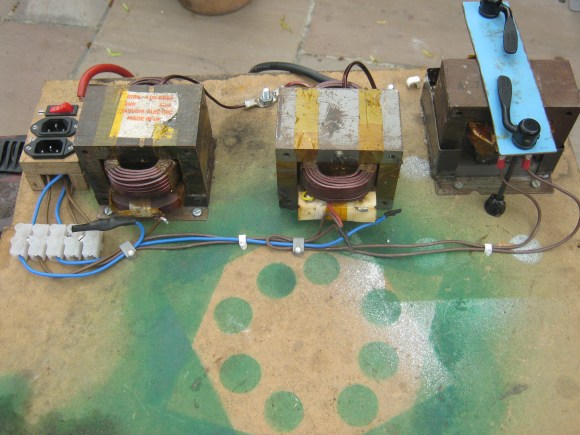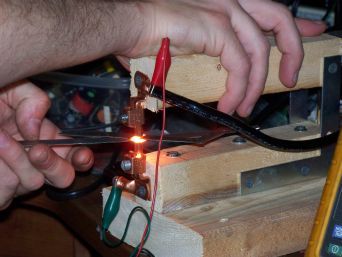
[Mike Worth] wanted the option to run his Microwave Oven Transformer welding rig at less that full power. After being inspired by some of the other MOT hacks we’ve featured he figured there must be a lot of ways to do this. But his searches on the topic didn’t turn up anything. So he just designed and built his own adjustable current limiter for the welder.
At the beginning of his write-up he details what we would call a bootstrap procedure for the welder. Go back and check out his original build post to see that he had been holding the framework for the cores together using clamps. To make the setup more robust he needed to weld them, but this is the only welder he has access to. So he taped some wood shielding over the coils and fired it up.
The current limiter itself is built from a third MOT. Adjustment is made to the cores by changing out the E and I shaped pieces. This allows for current limiting without altering the windings. [Mike] holds it all in place with a couple of bicycle wheel quick connect skewers.
It just goes to show that you should never get rid of a microwave without pulling the transformer. Even if you don’t need a welder wouldn’t you love a high-voltage bug zapper?












